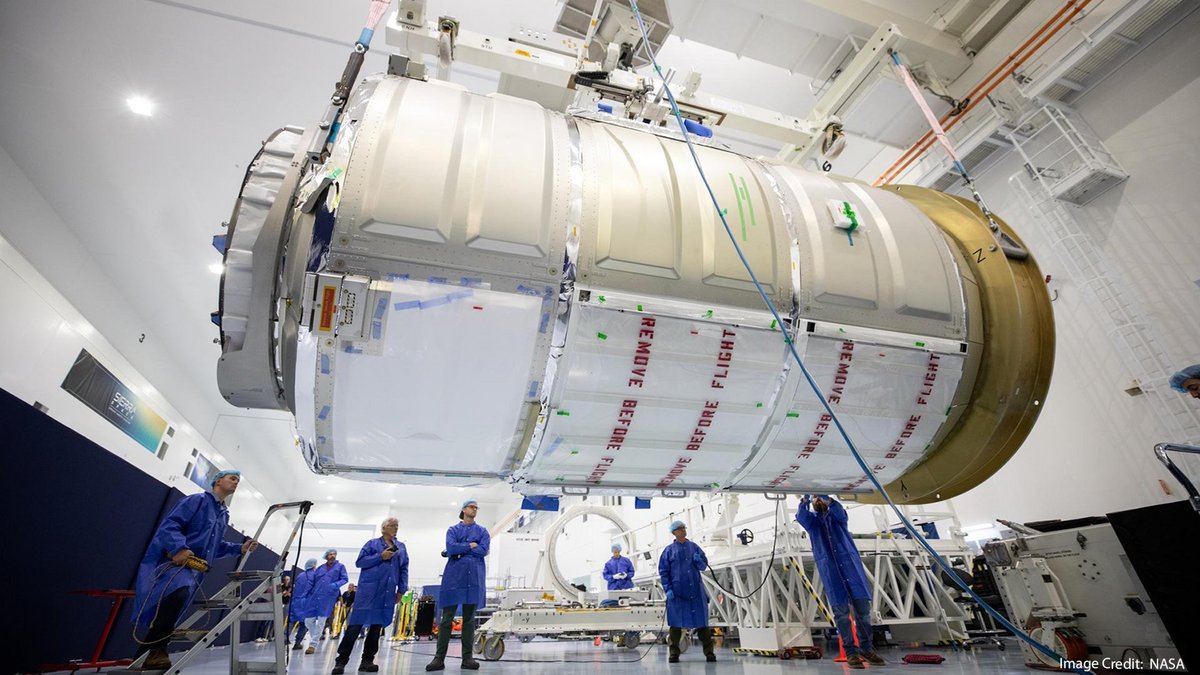This January 30 is still a Falcon 9 which took off for orbit, but this time it carried a Cygnus freighter bound for the International Space Station. Due to a lack of an available launcher, Northrop Grumman turned to SpaceX, and the experience was conclusive! Cygnus is on its third different rocket…
When NASA chose, at the end of the 2000s, the Dragon and Cygnus cargo ships from two different companies, it made sure that the suppliers were not dependent on each other, to be able to ensure that the Station International Space Agency would still be supplied. Yet after Russia invaded Ukraine in February 2022, sanctions and countersanctions stopped the arrival of Russian rocket engines in the United States. As a result, Northrop Grumman, responsible for the Cygnus cargo ship, which until then operated the Antares launcher, had to urgently find another solution. The development of a new version of Antares is underway with Firefly Space, but it takes time, and the ISS still needs to be delivered… But Cygnus has unique advantages, NASA has therefore requested continuity of the service . United Launch Alliance, which had already sent these cargo ships with its Atlas V rocket, was not available. So only SpaceX remained in the USA, which accepted.
It’s a trap!
However, on paper, Falcon 9 is not a rocket perfectly suited to Cygnus. SpaceX has standardized its launcher for a long time, and both the stages and the fairings are mass-produced. But exceptionally, the fairing for this particular takeoff had to be modified: Cygnus takes on board experiments and fresh products, and loading is ensured in the 24 hours before the launch… While the cargo is already under its fairing. The teams at Cape Canaveral, Florida, therefore had to add an access hatch, with specific equipment and an installation on the side which could serve as a “clean room”. A fairly unique specification for a rocket that currently takes off every three days.
Arrival on the ISS tomorrow
The takeoff itself went very well. At 6:07 p.m. (Paris time), Falcon 9 left its LC-40 launch site to launch into the skies of Florida. The first stage returned to land a few minutes later, while the Cygnus cargo ship was injected into its orbit. With its two circular solar panels open, it will continue with the ISS until tomorrow, February 1, for docking in the morning.
Cygnus requires the maneuvers of the Canadarm2 robotic arm: it will approach 8 meters from the station before being captured and only then will it be firmly docked to the hatch under the Unity module. The astronauts will be able to enter after a few hours and start unpacking the 3.7 tons of cargo inside, starting with fresh fruits and vegetables (even if the astronauts started new crops a few days ago of cherry tomatoes, it will take some time to enjoy them).
The astronauts will not be bored
Within Cygnus, the loading is quite heterogeneous. There are more than a ton (1,113 kg) of consumable equipment intended for astronauts, namely food, drinks, clothes and towels, personal packages, filters, etc. Several laptops too, tailor-made equipment for spacesuits intended for spacewalks (for only 16 kg, so probably base layers and gloves), replacement equipment for the ISS and 1,369 kg of scientific experiments .
This is the largest item in terms of mass and volume. They concern medical research with the “Genes in space” student experiment, an attempt to reconstruct cartilage in weightlessness, or an experiment with bacteriorhodopsin protein, useful for fighting degenerative vision diseases.

There is also physics with an automated optical fiber manufacturing prototype, the production test of an ultrathin film for protecting electronic components, and the experimental production of crystals of rhodium materials at room temperature. To all this we must also add an ESA 3D printer which will test metal printing. As it is armored to operate in the Columbus laboratory, the machine alone weighs 180 kg… The Danish astronaut Andreas Mogensen who must test it should not waste his time: he only has 3 weeks left before his return on earth.
And speaking of return, the four passengers of the private mission Axiom-3 should return to land during the night of Saturday to Sunday, February 3. In all, they will have spent more than two weeks in the big resort!
Source : Space News

0